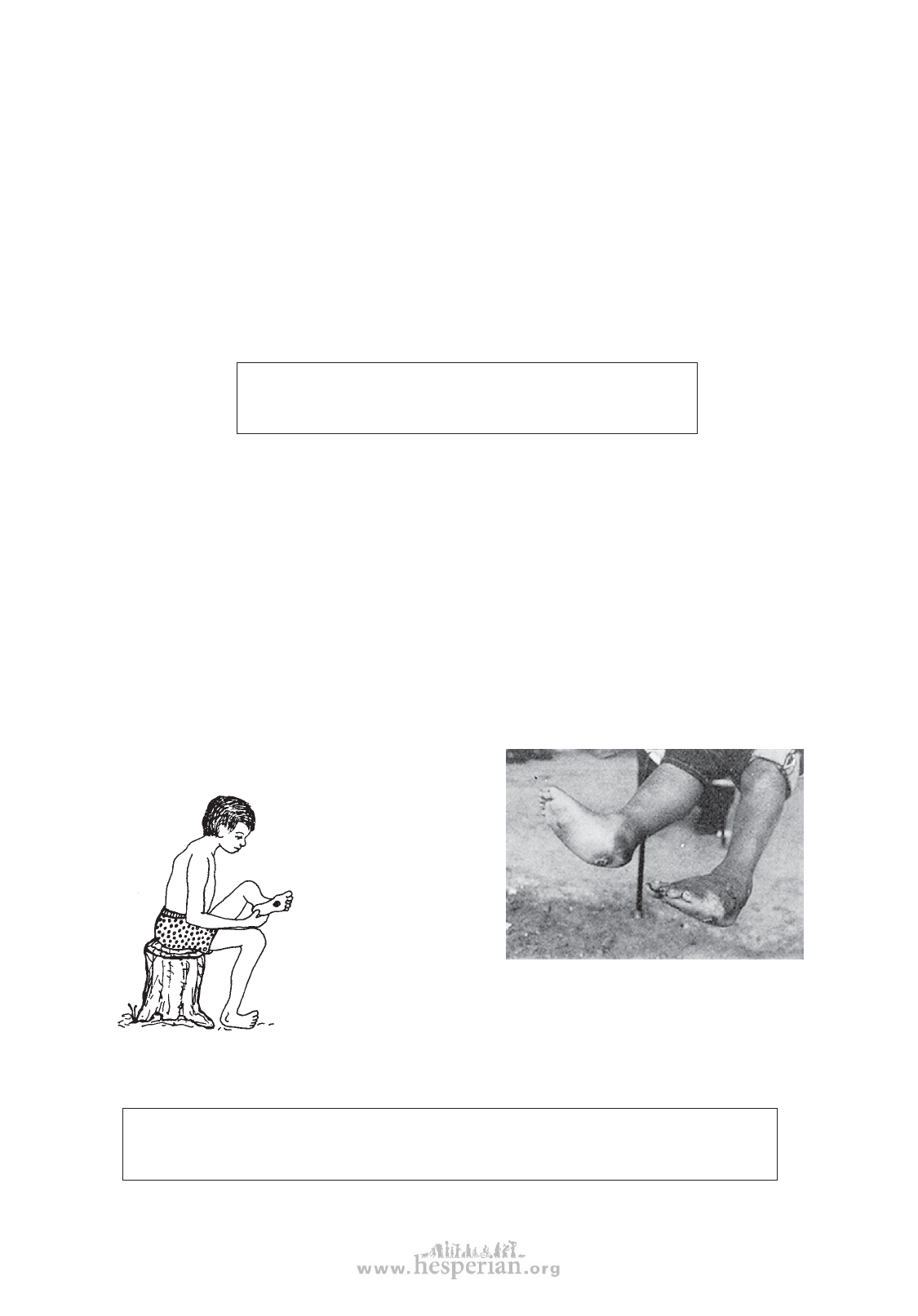
Surgery and orthopedic corrections
SPINA BIFIDA
To prevent or correct foot contractures in many children, it may be necessary to
straighten the feet in the same way as for club feet (see p. 565). So that the contractures
do not come back, the children will need to do exercises (see p. 115 and 383) and
perhaps use simple plastic braces (p. 550), at least at night.
For curving of the spine, if severe, some children need surgery or a body brace. (See
p. 164.)
For children with spina bifida who have one hip dislocated, corrective surgery is
sometimes helpful. But surgery generally is not recommended for those children with
both hips dislocated. Usually they will walk just as well if the hips are left dislocated—
and with fewer complications and less suffering. (See “Hip Problems,” p. 156.)
173
CAUTION: Before any orthopedic surgery is performed on a
child with spina bifida, carefully evaluate the possibility she has of
walking and whether the surgery will really help her.
PREVENTION of pressure sores and injuries
As a child who has no feeling in parts of his body grows older and heavier, there is
increasing danger that pressure sores (bed sores) will form over bony areas that support
his weight (mostly his butt or his feet). To prevent this:
• Have the child sleep and sit on a mattress or cushion that is soft (such as foam
rubber), and move or turn over often.
• Examine the child’s lower body daily for early signs of irritation or sores. Check
especially the hips, knees, and feet.
• When he is a little older, the child can learn to check his own body each day for
sores.
DANGER: Whether
the cause is spina
bifida or leprosy,
children who walk but
have no feeling in their
feet run a high risk of
cuts, burns, sores, and
serious infections on
their feet. Teach them
to check their feet
every day.
Also, be sure that
sandals, shoes, and
orthopedic braces fit
well and do not cause
blisters or irritation.
This child with spina bifida cut her feet on broken
glass. Because the cuts did not hurt, they were
neglected and became severely infected. In time,
the infection spread to the bones in both her
feet and began to destroy them. As a result, her
feet are very deformed and she may lose them
completely.
IMPORTANT: Information on prevention and treatment of pressure sores is in
Chapter 24, p. 195 to 202. Be sure to read it. Also see Chapter 26 on Leprosy,
p. 223 to 225, for special footwear and ways to protect the feet.
disabled village children